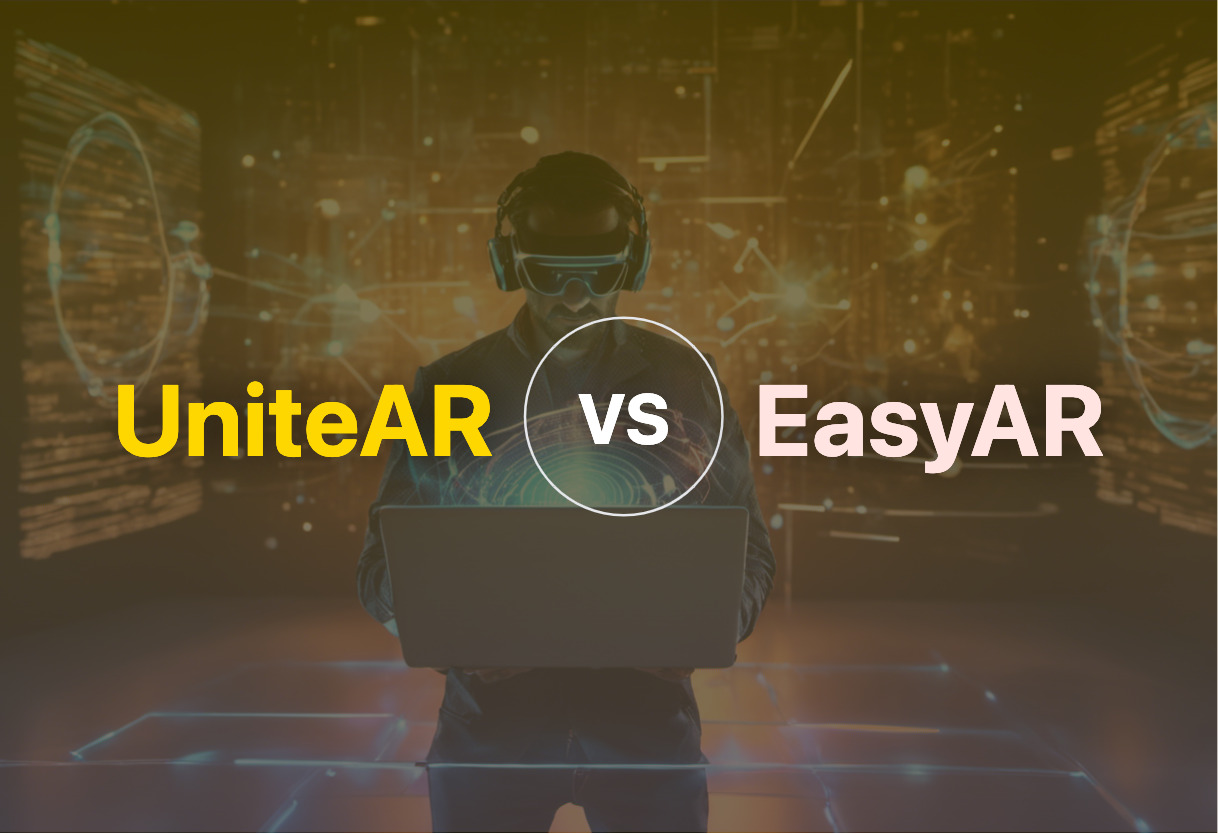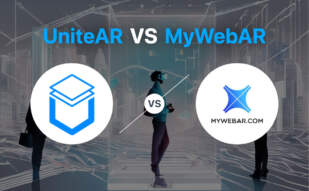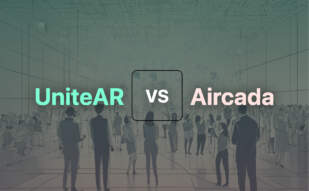EasyAR reigns superior for developers desiring cross-platform support, algorithm components, and precise 3D world models. Nevertheless, UniteAR showcases strength in user-friendly AR experiences replete with no code requirements, making it ideal for educators, creators, and businesses.

Key Differences Between UniteAR and EasyAR
- UniteAR offers over 100 3D models and diverse content forms. EasyAR provides high-precision 3D physical world model via its SenseMARS Reconstruction.
- UniteAR bolsters user privacy. It doesn’t track user data, unlike EasyAR.
- EasyAR supports AR developments across different platforms: iOS, Android, Windows, macOS. UniteAR is optimized mainly for iOS and MacOS.
- While both platforms offer coding-free AR app creation, UniteAR specializes in white-labeled AR apps and WebAR plugins.
| Comparison | UniteAR | EasyAR |
|---|---|---|
| Technology | AR platform | AR platform |
| Free Trial | Available | Available |
| Pricing | Free version, In-app purchases | $39/month |
| Platform Support | iOS, MacOS | iOS, Android, Windows, macOS |
| No-Code Development | Available | Available |
| Company Founding Year | 2016 | 2012 |
| Company Origin | India | China |
| Applications | Marketing, advertising, education | Retail, education, repair and maintenance, medical industry |
| AR Elements | 3D models, 360-degree content, videos, animated gifs, image slideshows | AR Configurator, AR Measurement, AR Floor Tiling |
| Optimized Devices | iPhone, iPad, iPod touch, Mac with Apple M1 chip or later | Available on compatible devices (iOS/Android/Windows/macOS) |
What Is UniteAR and Who’s It For?
UniteAR, generally known as the power of augmented reality, is a free app, and a brainchild of iBoson Innovations, founded in 2016 and based in India. It offers immersive and engaging experiences to its audience ranging from educators, creators, businesses, to enterprises. The app is packed with over 100 3D models to explore, in addition to 360-degree content, videos, animated gifs, and image slideshows. Its forte is to provide custom AR experiences without requiring any coding skills.

Pros of UniteAR
- 100+ 3D Models and AR Gallery
- Does not Track User Data
- Instant App Creation for Android/iOS
- Free to Download and Use
Cons of UniteAR
- App Size is a Hefty 45.5 MB
- Limited Language Support
- Requires Modern Hardware (iOS 11.1 or later, MacOS 11.0 or later)
What Is EasyAR and Who’s It For?
EasyAR, since its inception in 2012, has been an acclaimed AR platform for application development and digital animations. A product of China, the platform impresses with features that cleverly utilise a single RGB camera for capturing environmental details. This AR platform suits developers who are passionate about creating apps across iOS, Android, Windows, and macOS platforms. The SenseMARS software offered by EasyAR also fascinates with its AR, MR content generation, and cloud engine support.

Pros of EasyAR
- High-Precision 3D Physical World Models
- AR Content Management System (CMS)
- Accurate AR Features with Cross-platform Support
Cons of EasyAR
- Unfeasible Pricing at $39/Month
- Lack of Optimization
- Limited Web Support
UniteAR vs EasyAR: Pricing
Both UniteAR and EasyAR offer viable AR solutions with varying pricing structures, including free versions and trials.
UniteAR
UniteAR provides a free version alongside free trials, offering a cost-effective entry-point for businesses exploring AR solutions. In-app purchases present an upgrade path, accommodating potential scaling demands.
EasyAR
EasyAR has a competitive pricing strategy, offering its services at $39/month. Prospective users can trial the platform free, providing a risk-mitigated opportunity to evaluate suitability before financial commitment.
The Final Choice: UniteAR vs EasyAR
For the final curtain call, let’s break down which AR platform—UniteAR or EasyAR—wins for different audience segments.
For Educators
UniteAR outperforms by offering an intuitive, no-coding solution, empowering educators to create immersive and engaging experiences. Bonus: the large pool of 3D models and the AR gallery. Privacy-friendly, it does not link contact info to user identity. Lastly, a free version is available—a budget-friendly option for most educators.

For Tech Startups
Emergent startups looking for a cost-effective, robust platform should opt for UniteAR. With Android/iOS instant AR app creation at no cost, startups can dip their toes without draining resources. Seamless integration, rich applications, and proprietary AR engine make it a no-brainer.

For Large Scale Companies
Enterprise-level needs meet their match in EasyAR. Powerful features as AR Cloud Image Recognition, relocalization, SenseMARS platform show its mettle. However, the pricing ($39/month) might deter smaller ventures.

For Experienced Developers
Advanced AR developers will appreciate EasyAR for features like AR SDK, cross-platform support, and AR Configurator. However, UniteAR’s less optimization may appeal for its ‘development-lite’ approach.

Our verdict: UniteAR shines for educators and startups with its no-code, cost-efficient AR creation. Yet, EasyAR wins for large companies and experienced developers with robust features and cross-platform prowess.
Patrick Daugherty
Content writer @ Aircada. Merging AR expertise with a love for late-night gaming sessions.





